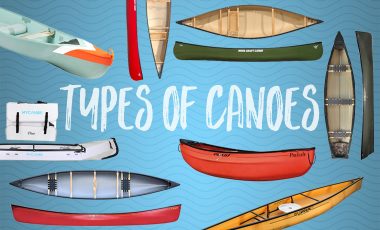You might be surprised to learn that there are many different styles and types of canoes out there. While some are multi-purpose and suitable for various waters, others are specifically designed for fast-moving rivers and rapids, calm lakes, or multi-day adventures.
In this article, we’ve covered the main types of canoes, their unique features, and the pros and cons of each. This should give you a good idea of how to choose the right type of canoe for you.
In case you’re unsure if a canoe is the right vessel for you, it might be useful to first read our guide to the differences and similarities of canoes and kayaks.
- Solo vs tandem canoes
- Different types of canoes
- Types of specialist canoes
- Choosing the right type of canoe for you
Solo vs tandem canoes
Firstly, let’s talk about the key differences between solo and tandem canoes. Most types of canoes are available in both solo and tandem versions, so it’s useful to know which you prefer before looking at more specific types of canoes.
Solo canoes are designed to be paddled by one person. Because of this, they’re usually shorter than their tandem equivalents with only one seat. In tandem canoes, there is a seat at the front – the bow seat – and a seat at the back – the stern seat – and each canoeist paddles on opposite sides of the canoe. In a solo canoe, the seat is in the middle or slightly set back, and the paddler must alternate between paddling on the left and right or adopt the J-stroke which enables them to paddle on just one side.
In either a solo or a tandem canoe, you have the choice of paddling from a kneeling or sitting position. Some tandem canoes allow you to move the seats so that they can function as a solo canoe. Meanwhile, others have an additional middle seat for a third or fourth passenger.
Usually, tandem canoes will have a higher weight capacity than solo canoes, which is better for families and expeditions. However, most tandems are awkward to paddle solo unless you are an experienced paddler, so they’re not a great choice if you and your paddle buddy are on different schedules!
For more information about the structure of canoes, take a look at this parts of a canoe diagram.
Different types of canoes
Recreational canoes
BEST FOR: beginners and experienced paddlers, flat water, lakes and slow-moving rivers
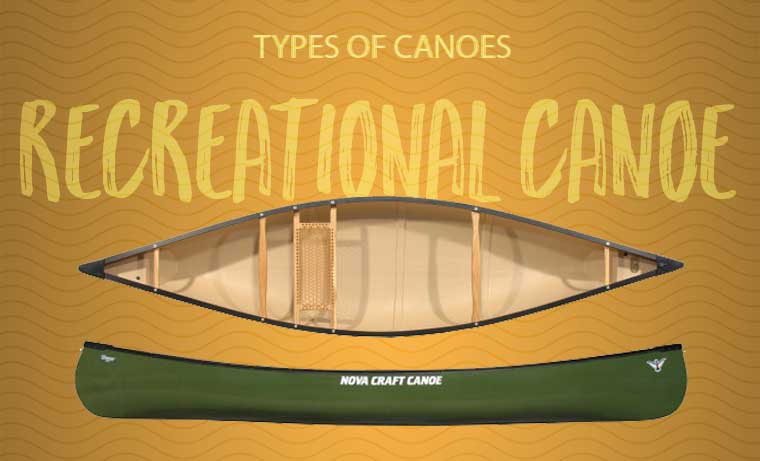 Let’s start with recreational canoes. Recreational canoes are designed to be very stable and comfortable to paddle. They’re shorter than touring canoes, typically between 12 and 17 ft long, making them easy to manoeuvre. Because most recreational canoes have a wide and stable hull, they’re a great choice for beginner paddlers and families but are also suitable for intermediate or advanced paddlers.
Let’s start with recreational canoes. Recreational canoes are designed to be very stable and comfortable to paddle. They’re shorter than touring canoes, typically between 12 and 17 ft long, making them easy to manoeuvre. Because most recreational canoes have a wide and stable hull, they’re a great choice for beginner paddlers and families but are also suitable for intermediate or advanced paddlers.Recreational canoes are most at home on flat water, including small or calm lakes or slow-moving rivers. That’s why you’ll usually find this type of canoe available for rent at nature parks. Because they range in size, you can find recreational canoes that can seat multiple people. Although many are designed for two paddlers, with space for up to four people in total, you can also find solo recreational kayaks.
Pros
- Very stable
- Spacious
- Turns easily
- Usually less expensive
Cons
- Difficult to paddle on choppy waters
- Limited tracking capabilities
Touring canoes
BEST FOR: intermediate paddlers, travelling far, carrying lots of gear
 Touring canoes (sometimes called expedition canoes) are like recreational canoes, but they’re designed to help you cover longer distances with less effort. Compared to recreational canoes, touring canoes are slimmer and longer, usually between 16 and 19 ft long. This shape allows for better tracking and reduces wind resistance, making it easier to travel in a straight line with less physical effort.
Touring canoes (sometimes called expedition canoes) are like recreational canoes, but they’re designed to help you cover longer distances with less effort. Compared to recreational canoes, touring canoes are slimmer and longer, usually between 16 and 19 ft long. This shape allows for better tracking and reduces wind resistance, making it easier to travel in a straight line with less physical effort.Because touring canoes are longer, you also have more space to bring your picnic, camping gear, or a four-legged friend. Usually, they also have a greater weight capacity and sit lower in the water, which helps with stability. The downside of touring canoes is that they take more effort to turn due to the longer design.
Pros
- Track well
- Extra storage space
- Typically, more durable
- Better for travelling long distance
Cons
- Slower to turn
- More expensive
Whitewater canoes
BEST FOR: advanced paddlers, fast moving rivers and rapids
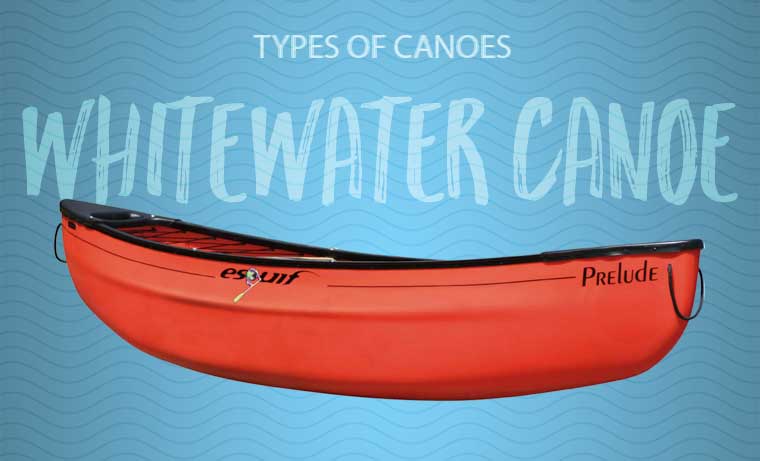 These are the shortest types of canoes, typically just 8 to 12 ft long, and are specifically designed to tackle fast-moving water and rapids. Hull features, such as a high rocker – referring to the curve from bow to stern – allow whitewater canoes to turn fast, sometimes on a single paddle stroke. Meanwhile, additional features, such as flotation panels in the bow and stern, help keep the boat afloat and resurface from large waves.
These are the shortest types of canoes, typically just 8 to 12 ft long, and are specifically designed to tackle fast-moving water and rapids. Hull features, such as a high rocker – referring to the curve from bow to stern – allow whitewater canoes to turn fast, sometimes on a single paddle stroke. Meanwhile, additional features, such as flotation panels in the bow and stern, help keep the boat afloat and resurface from large waves.Naturally, whitewater canoes need to be durable. That’s why they’re typically made from either ABS (thermoform) plastic – the cheaper option – or a durable composite such as Kevlar – a material also used in bulletproof vests. They may also have leg straps and foot braces that allow for better control of the canoe and spray skirt attachment points.
Pros
- Highly durable
- Turn quickly (ideal for rapids)
- Better control features
Cons
- Difficult to paddle in a straight line
River Canoes
BEST FOR: intermediate/advanced paddlers, fast-moving rivers
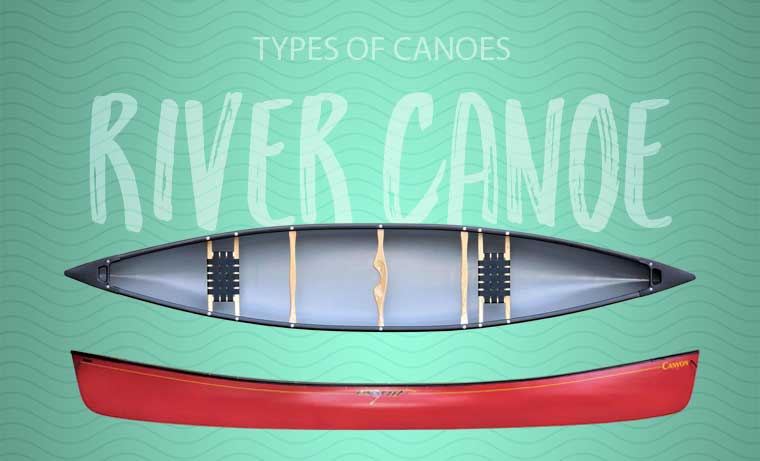 River canoes (also called river tripping canoes) offer a compromise between whitewater canoes and touring canoes. Still featuring a high rocker, river canoes allow for fast manoeuvrability and greater stability when crossing eddies – where upstream and downstream currents meet. Although the hull design can vary, most don’t have keels, allowing for fast and efficient turning.
River canoes (also called river tripping canoes) offer a compromise between whitewater canoes and touring canoes. Still featuring a high rocker, river canoes allow for fast manoeuvrability and greater stability when crossing eddies – where upstream and downstream currents meet. Although the hull design can vary, most don’t have keels, allowing for fast and efficient turning.Because river canoes are longer than whitewater canoes, usually 15 to 17 ft, they’re able to track well enough to get you across the flatter sections of a river. Other features, such as steeply flared sides, help to keep the water out. Like whitewater canoes, river tripping canoes are also highly durable.
Pros
- Great for downriver trips with rapids
- Stable on rough water
- Durable
- Turn fast
Cons
- Not ideal for long distances
Inflatable canoe
BEST FOR: beginners / intermediate paddlers, slow-moving rivers, lakes and calm seas
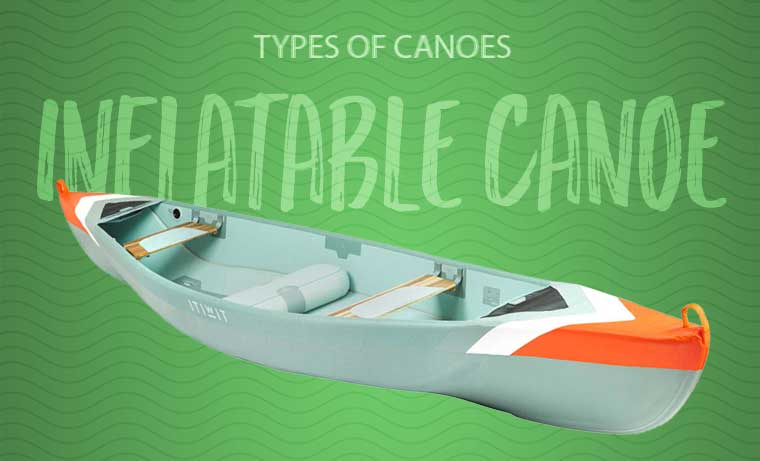 Inflatable canoes are a practical choice if transporting and storing a rigid canoe will be challenging for you. Most inflatable canoes pack to about the size of a large suitcase, small enough to store in the boot of a car or inside an apartment.
Inflatable canoes are a practical choice if transporting and storing a rigid canoe will be challenging for you. Most inflatable canoes pack to about the size of a large suitcase, small enough to store in the boot of a car or inside an apartment.Inflatable canoes vary quite a bit in shape and quality. Some have a flat hull that’s best suited to short trips on calm and sheltered waters as they tend to get blown off course easily. However, some inflatable kayaks are almost as rigid as their hard-shell cousins. Some also feature a V-shaped hull, making them suitable for touring larger lakes, rivers, or sheltered coastlines.
Admittedly, inflatable canoes are not as durable as hard-shell canoes, nor do they match hard-shells on speed or tracking. That said, inflatable canoes are a practical type of canoe if you have limited storage space and like to travel with your canoe. They can also be inexpensive.
Pros
- Convenient to store
- Available in various lengths and hull shapes
- Most have adjustable seating positions
- Can be inexpensive
Cons
- Not as durable
- Don’t track well in moderate/high winds
Folding canoes
BEST FOR: beginners and advanced paddlers, slow-moving rivers, lakes and calm seas
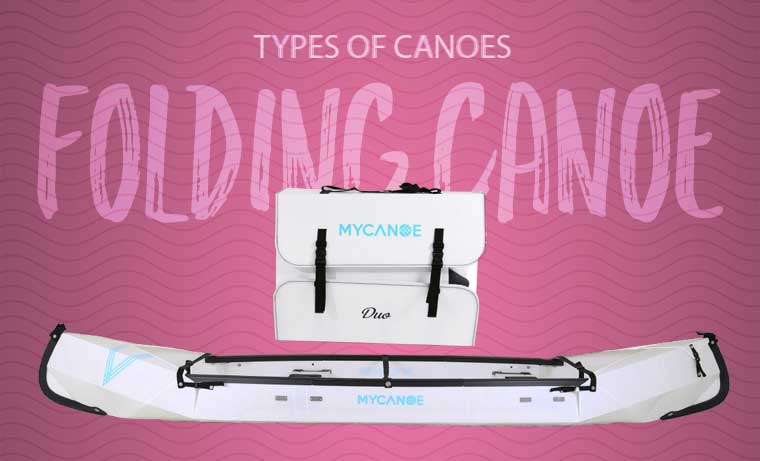 Folding canoes are another convenient option for people with limited storage space or anyone who likes to take their canoe on holiday. Most folding canoes have a rigid shell that is held together by an interlocking frame. Many also have crossbeams and inflatable side tubes that reinforce the frame. Like inflatable canoes, folding canoes come in a range of shapes and sizes, so you can find folding kayaks for recreational use as well as touring. Some are even suitable for whitewater rivers.
Folding canoes are another convenient option for people with limited storage space or anyone who likes to take their canoe on holiday. Most folding canoes have a rigid shell that is held together by an interlocking frame. Many also have crossbeams and inflatable side tubes that reinforce the frame. Like inflatable canoes, folding canoes come in a range of shapes and sizes, so you can find folding kayaks for recreational use as well as touring. Some are even suitable for whitewater rivers.Pros
- Portable
- Dry faster than inflatable canoes
- Some models are very durable
Cons
- Pricey
- Weight is similar to a hard shell
Types of specialist canoes
Racing canoes
BEST FOR: advanced paddlers, speed, competition
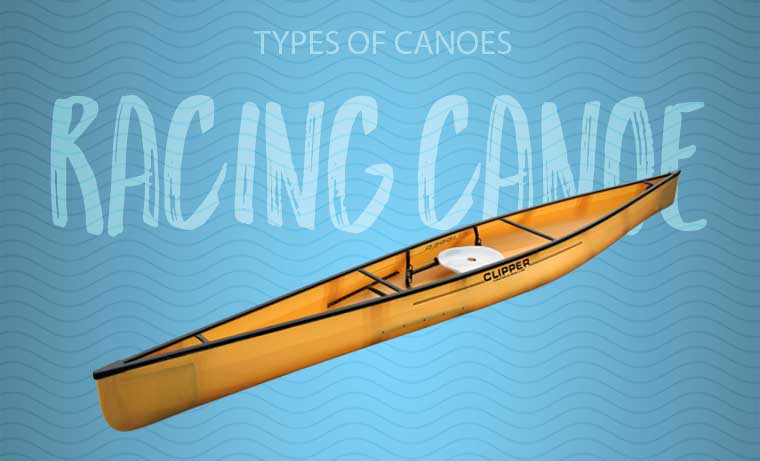 Racing canoes are lightweight, streamlined, and track well. Most have a pointed bow and stern, designed to pierce through waves and currents and an extra rigid hull that minimises water resistance. Racing canoes are much narrower than recreational canoes and sit lower in the water, which allows them to move faster but also makes them less stable when stationary. They’re usually also longer, 18 to 20ft, which helps with tracking but makes turning more difficult.
Racing canoes are lightweight, streamlined, and track well. Most have a pointed bow and stern, designed to pierce through waves and currents and an extra rigid hull that minimises water resistance. Racing canoes are much narrower than recreational canoes and sit lower in the water, which allows them to move faster but also makes them less stable when stationary. They’re usually also longer, 18 to 20ft, which helps with tracking but makes turning more difficult.Unlike recreational and touring canoes, racing canoes don’t offer much (or any) additional space for luggage or passengers. Most racing canoes are designed to be paddled by one or two people from a half-kneeling half-sitting position.
Pros
- Able to reach greater speeds
- Tracks very well
Cons
- Slower to turn
- Less stable
Fishing canoes and square stern canoes
BEST FOR: beginner and advanced paddlers, fishing
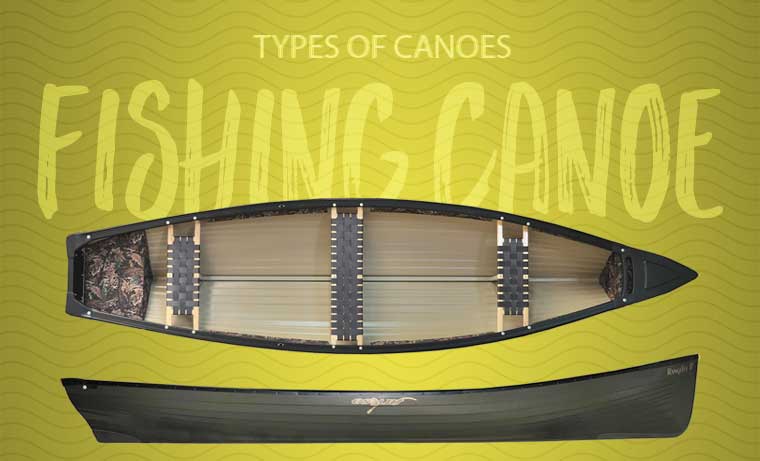 Like recreational canoes, fishing canoes are built for stability and comfort. They usually offer a high weight capacity and plenty of space for carrying your fishing equipment, picnic, and (sometimes) camping gear.
Like recreational canoes, fishing canoes are built for stability and comfort. They usually offer a high weight capacity and plenty of space for carrying your fishing equipment, picnic, and (sometimes) camping gear.Although a recreational or touring canoe would be perfectly fine for most fishing trips, fishing canoes have specific features such as rod holders that come in handy on a fishing trip. Many also have a wider beam – meaning the canoe’s width measured from the widest point on the gunwale – which offers greater stability.
There are two main types of fishing canoe. The first type has the traditional pointed bow and stern, while the second type has a square stern. The square stern canoe offers greater versatility as you have the option of adding an outboard motor.
Pros
- Stable
- Possibility of attaching a motor
- Rod holders
- Spacious
Cons
- Slow-moving (unless you add a motor)
Choosing the right type of canoe for you
If you’re just getting into canoeing, then your best option is probably a recreational canoe. These are the easiest to handle and the most stable. You can spend more time improving your paddle skills and less time in the water.
Touring and expedition canoes are a practical choice for anyone that’s been paddling for a while or considering a multi-day adventure. But you’ll also need to consider whether a solo or tandem canoe would be better for you and whether you would prefer a higher weight capacity or a faster ride.
The waterways in your area might also impact your decision. Are the rivers in your area mostly slow-moving, or are you lucky enough to have rapids nearby? Do you want to travel with your canoe? In which case, you might want to consider an inflatable or folding canoe. Or, if your local waterways have lots of locks and low bridges, a lightweight solo or tandem canoe might be more sensible.
Ultimately, there’s no right answer. The right canoe for you will depend on your paddle skills, normal usage, and local waterways.
What type of canoe is the most stable?
Generally, recreational canoes and fishing canoes offer the best stability on flat water. That’s because most have flatter and wider hulls, which offer greater primary stability, meaning that they are very stable on calm waters and while stationary. Comparatively, canoes with V-shaped hulls, such as touring, expedition, and racing canoes, offer better secondary stability. Meaning that they fare better on choppy waters and move faster, but beginners may struggle to balance them.


